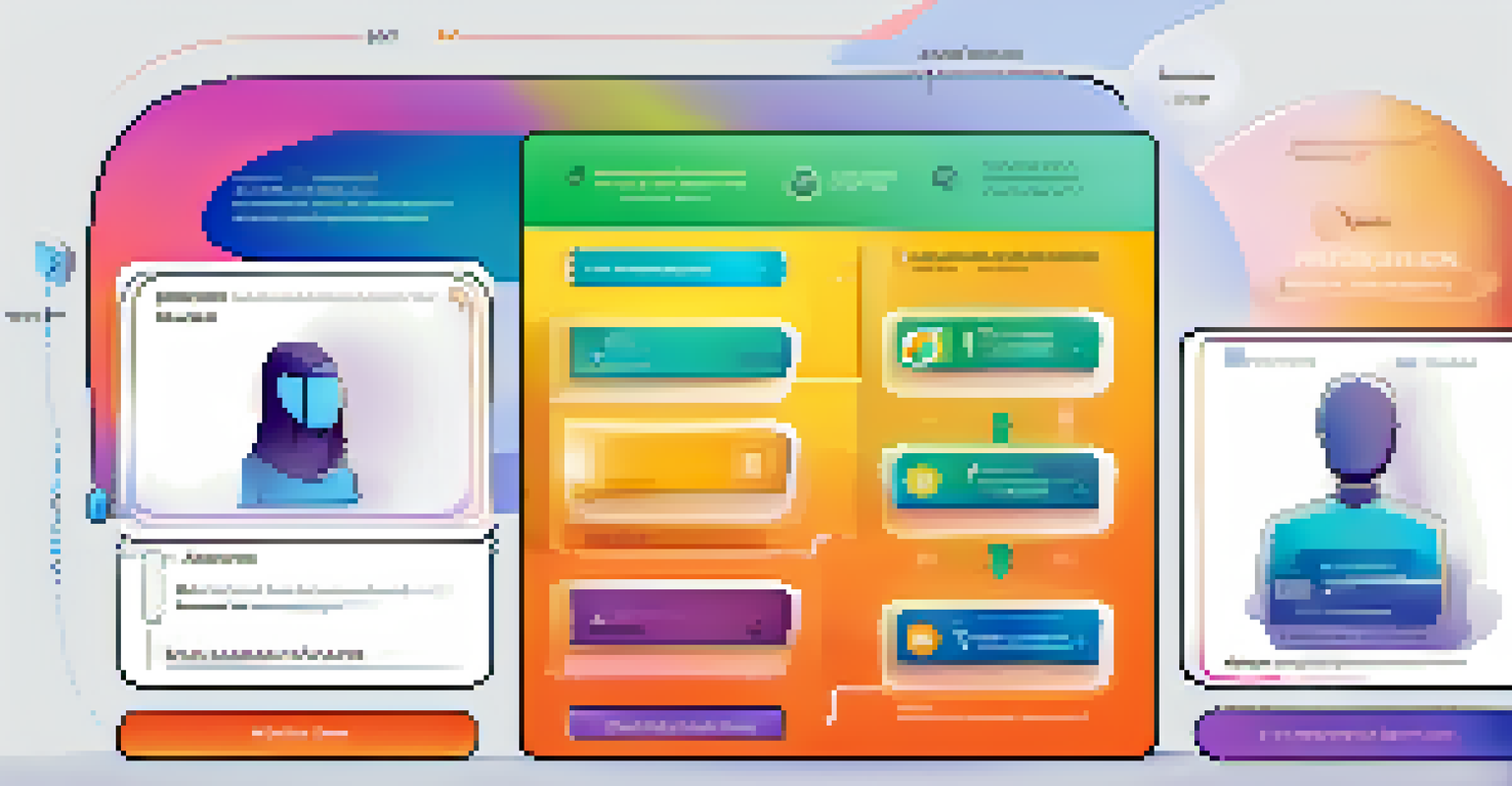Security Considerations When Developing Chatbots

Understanding the Importance of Chatbot Security
In today's digital landscape, chatbots are becoming increasingly popular for customer service and engagement. However, with this rise comes the responsibility to ensure their security. Just like a physical store needs locks and alarms, chatbots require robust security measures to protect user data and maintain trust.
Security is not a product, but a process.
A breach in chatbot security can lead to data theft, financial loss, and a damaged reputation. Imagine having your personal information exposed simply because a chatbot was not adequately secured. This scenario emphasizes the need for developers to prioritize security from the very beginning.
By treating security as a fundamental aspect of chatbot development rather than an afterthought, developers can create safer, more reliable interactions. This proactive approach not only protects users but also enhances the overall effectiveness of the chatbot.
Implementing User Authentication Mechanisms
User authentication is a crucial layer of security for chatbots, especially when handling sensitive information. Just as you wouldn’t want anyone to access your bank account without proper credentials, chatbots need to verify users before providing access to private data. Common methods include password protection, social media logins, and even biometric options like fingerprint scanning.

By employing these authentication mechanisms, developers can significantly reduce the risk of unauthorized access. For instance, if a chatbot requires a user to log in via a secure method, it acts as a barrier against potential threats. This not only safeguards information but also fosters a sense of security for users interacting with the bot.
Prioritize Chatbot Security Measures
Developers must treat security as a core aspect of chatbot development to protect user data and maintain trust.
However, it's essential to strike a balance between security and user experience. If authentication becomes too cumbersome, users may abandon the interaction altogether. Therefore, finding a seamless solution that maintains security without sacrificing convenience is key.
Securing Data Transmission with Encryption
When chatbots communicate with users or servers, data transmission must be secure to prevent interception by malicious actors. This is where encryption comes into play, acting like a secret code that only authorized parties can understand. Without encryption, data sent over the internet is akin to sending a postcard that anyone can read.
The best way to predict the future is to invent it.
Utilizing Transport Layer Security (TLS) is a common way to encrypt data in transit. This ensures that messages exchanged between the chatbot and users are not easily deciphered, protecting sensitive information from eavesdroppers. Think of it as a protective envelope that keeps your private messages safe until they reach their intended recipient.
Implementing encryption not only protects user data but also builds trust. Users are more likely to engage with a chatbot that they believe is safeguarding their information, leading to a more positive experience overall.
Regularly Testing for Vulnerabilities
Just as you’d routinely check your home's locks and alarms, chatbots require regular security assessments to identify vulnerabilities. This proactive approach helps developers catch potential security issues before they can be exploited. Testing can include vulnerability scans, penetration testing, and code reviews, all aimed at uncovering weaknesses in the system.
By simulating attacks, developers can understand how their chatbot responds and where improvements are necessary. For example, if a vulnerability test reveals that a chatbot can be easily manipulated, steps can be taken to fortify its defenses. This process is similar to a fire drill—preparing for potential threats and ensuring readiness.
User Education Enhances Security
Informing users about security best practices empowers them to protect their information and reduce risks.
Regular testing not only enhances security but also keeps the development team informed about the latest threats and trends. This knowledge allows for continuous improvements and adaptations, ensuring that the chatbot remains resilient against emerging security challenges.
Monitoring and Logging Chatbot Interactions
Another critical aspect of chatbot security is monitoring and logging interactions. This practice acts as a security camera for your digital environment, allowing developers to track user interactions and detect unusual behavior. Monitoring can help identify patterns that may indicate a security breach or misuse of the chatbot.
Logging interactions provides valuable insights into how users engage with the chatbot, which can also inform improvements in functionality. If a spike in unusual requests is detected, developers can investigate further to understand the root cause. This proactive monitoring allows for quick responses to potential security threats.
Moreover, maintaining logs can be vital for compliance and auditing purposes. In industries where data protection regulations are stringent, having a clear record of interactions can demonstrate adherence to security standards.
Implementing Role-Based Access Control
Role-based access control (RBAC) is an effective way to manage who can interact with a chatbot and what information they can access. Think of it as a VIP section at a concert—only certain individuals have access to specific areas or information. By assigning roles to users, developers can limit access to sensitive data based on the user's needs.
For instance, a customer service representative may need more access to user information than a general user. By implementing RBAC, developers can ensure that sensitive information is only accessible to those who truly need it, reducing the risk of data breaches. This organized approach to access management enhances security while ensuring that users have the appropriate level of interaction.
Regular Testing for Vulnerabilities
Routine security assessments help identify and address potential weaknesses in chatbot systems before they can be exploited.
Moreover, RBAC can facilitate easier management of user permissions as roles can be updated or changed as needed. This adaptability is crucial in a dynamic environment where team structures and user needs frequently evolve.
Educating Users on Security Best Practices
Even with all the technical measures in place, user education is an essential component of chatbot security. Just like teaching kids about fire safety, users should be informed about best practices when interacting with chatbots. This includes guidance on recognizing phishing attempts and understanding how to protect their own information.
By providing users with clear instructions and resources, developers can empower them to take an active role in their own security. For example, a chatbot could include prompts reminding users not to share personal information or to verify the authenticity of requests. This proactive education can reduce the likelihood of security breaches stemming from user actions.

Ultimately, when users are informed and vigilant, it creates a safer environment for everyone involved. A well-informed user base complements the technical security measures implemented by developers, leading to a more secure chatbot experience.
Staying Updated with Security Standards and Practices
The landscape of cybersecurity is constantly evolving, which means developers must stay updated with the latest security standards and practices. Just as you wouldn’t use outdated software on your computer, chatbots should be developed using the most current security protocols. This includes keeping abreast of new vulnerabilities and adjustments to regulatory compliance requirements.
Attending workshops, participating in webinars, and following industry leaders can provide valuable insights into emerging threats and best practices. For instance, the introduction of new encryption technologies or authentication methods can offer enhanced protection for chatbots. Staying informed ensures that developers can adapt and improve their security measures accordingly.
By committing to ongoing education and adaptation, developers can ensure their chatbots remain resilient against potential threats. This dedication not only protects user data but also reinforces the credibility and reliability of the chatbot as a whole.